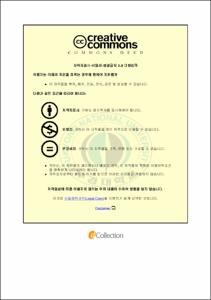SiCf/SiC 복합 세라믹스의 균열 치유 거동과 강도 특성
- Alternative Title
- Crack healing behavior and bending strength properties of SiCf/SiC composite ceramics
- Abstract
- In this study, after sintering the SiCf/SiC composite ceramics as material applied to blanket structure of fusion reactor, control the size of micro-crack which is created by conducting Vickers test on that. And, the refraction of crack was observed by using a Scanning Electron Microscope (SEM) and the relation between the bending strength and crack orientation were analyzed. The bending strength of Unidirectional Composite Specimen (UCS) and Cross Composite Specimen (CCS) was 313 MPa and 230 MPa as 1/3 of SiC matrix ceramics, respectively. And there is no relation between the bending strength of SiCf/SiC composite ceramics and the size of pre-crack until the limited crack size.
Crack healing behavior was investigated on SiCf/SiC composite ceramics and SiC matrix ceramics with coating SiO2 nano colloidal on surface using various method such as rolling, dipping and Hydrostatic pressure. Although coating treatment with SiO2 nano colloidal are conducted through the Hydrostatic pressure method, SiO2 Oxide is not created until the base of crack, because the crack size of SiCf/SiC composite ceramics are very large and wide by the separation of interface of fiber/fiber or fiber/matrix, So, the recovery of bending strength is unable to be expected as usual. Also, it was conducted to investigate about limited surface crack size of SiC matrix ceramics generating the crack healing behavior. Considering that crack healing phenomenon relates to not the length but width of crack, in case that SiC ceramics has 1.4 ㎛ width of crack and less, it is possible to recover the bending strength, because the crack is healed completely. In case that SiC matrix has surface crack up to limited crack width (1.4 ㎛), if repeat the Hydrostatic pressure coating treatment and the heat treatment until the limited count, it is possible to crack-heal the cracked part efficiently. But, if it is over the limited count, could not expect improvement of bending strength increases. And, nondestructively to research more fundamental properties of SiCf/SiC composite ceramic, investigated the relation between the bending strength and the generated elastic wave by applying wavelet method.
- Issued Date
- 2010
- Awarded Date
- 2010. 8
- Type
- Dissertation
- Publisher
- 부경대학교
- Affiliation
- 부경대학교
- Department
- 대학원 기계공학학ㆍ연협동과정
- Advisor
- 남기우
- Table Of Contents
- 1. 서론 1
2. 재료 및 실험 방법 3
2.1 재료 및 시험편 3
2.1.1 분말의 혼합 및 함침 3
2.1.2 소결과 가공 4
2.2 실험방법 10
2.2.1 예균열의 도입 10
2.2.2 SiO2 nano colloidal 코팅 처리 10
2.2.3 열처리 조건 11
2.2.4 상온 굽힘 실험 11
2.2.5 파단면 관찰 11
2.2.6 AE 탄성파 분석 11
3. 결과 및 고찰 17
3.1 SiCf/SiC의 균열 크기에 따른 상온 굽힘 강도 17
3.2 SiCf/SiC의 정수압 코팅법에 따른 균열 치유 특성 23
3.3 SiCf/SiC의 열처리 조건에 따른 균열 치유 특성 28
3.4 Tyranno-SA SiC 섬유의 열처리 조건에 따른 표면 변화 31
3.5 SiC의 정수압 단일 코팅법에 따른 균열 치유 특성 34
3.6 SiC의 정수압/롤 복합 코팅법에 따른 균열 치유 특성 36
3.7 SiCf/SiC 복합 세라믹스의 AE 탄성파 분석 43
4. 결론 52
- Degree
- Master
- Appears in Collections:
- 대학원 > 기계공학학연협동과정
- Files in This Item:
-
-
Download
 SiC 복합 세라믹스의 균열 치유 거동과 강도 특성.pdf
기타 데이터 / 4.96 MB / Adobe PDF
SiC 복합 세라믹스의 균열 치유 거동과 강도 특성.pdf
기타 데이터 / 4.96 MB / Adobe PDF
-
Items in Repository are protected by copyright, with all rights reserved, unless otherwise indicated.